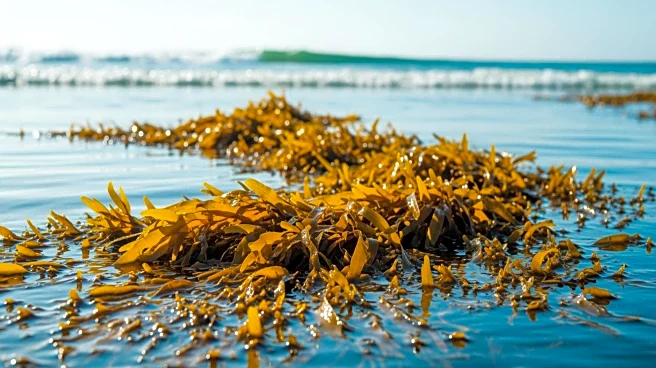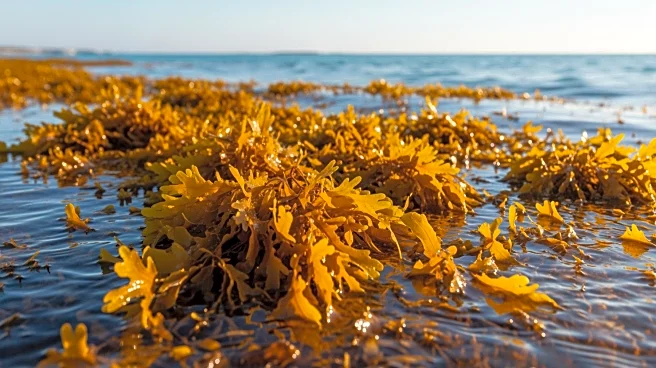What's Happening?
Scientists have discovered the primary factors fueling massive Sargassum blooms in the Atlantic, which have been affecting coastlines in the Caribbean, Gulf of Mexico, and South America. The blooms are
driven by phosphorus-rich deep water upwelling near the equator, which supports cyanobacteria that fix nitrogen for the algae. This symbiotic relationship gives Sargassum a competitive advantage, leading to increased biomass. The findings, published in Nature Geoscience, could help predict future Sargassum arrivals and mitigate their ecological and economic impacts.
Why It's Important?
Sargassum blooms pose significant challenges to coastal ecosystems and economies, affecting tourism and marine life. Understanding the mechanisms behind these blooms allows for better prediction and management strategies, potentially reducing their negative impacts. The research highlights the importance of monitoring climate patterns and nutrient cycles in the Atlantic, which could inform conservation efforts and policy decisions.
What's Next?
Researchers plan to expand their analysis by examining coral records across the Caribbean to refine predictions of Sargassum growth. This could lead to improved management strategies for coastal communities affected by the blooms. The study also raises questions about the impact of global warming on nutrient cycles, which may influence future Sargassum events.












